Are you planning a trip to the southwestern United States but struggling to choose what to do in Arizona? We’ve got you covered. Also known as the Grand Canyon State and the Copper State, Arizona is famous for its iconic sandstone landscapes and series of Old West mining towns that are sure to delight nature lovers and history buffs alike. But it’s not all deserts and cowboys. Arizona is also home to lakes, forests, and big cities brimming with galleries, wineries, and wellness-focused resorts. In no particular order, we’ve compiled a list of some of the best places to visit in Arizona to inspire your southwestern travels.
Related: 15 Best Airbnbs in Arizona, USA
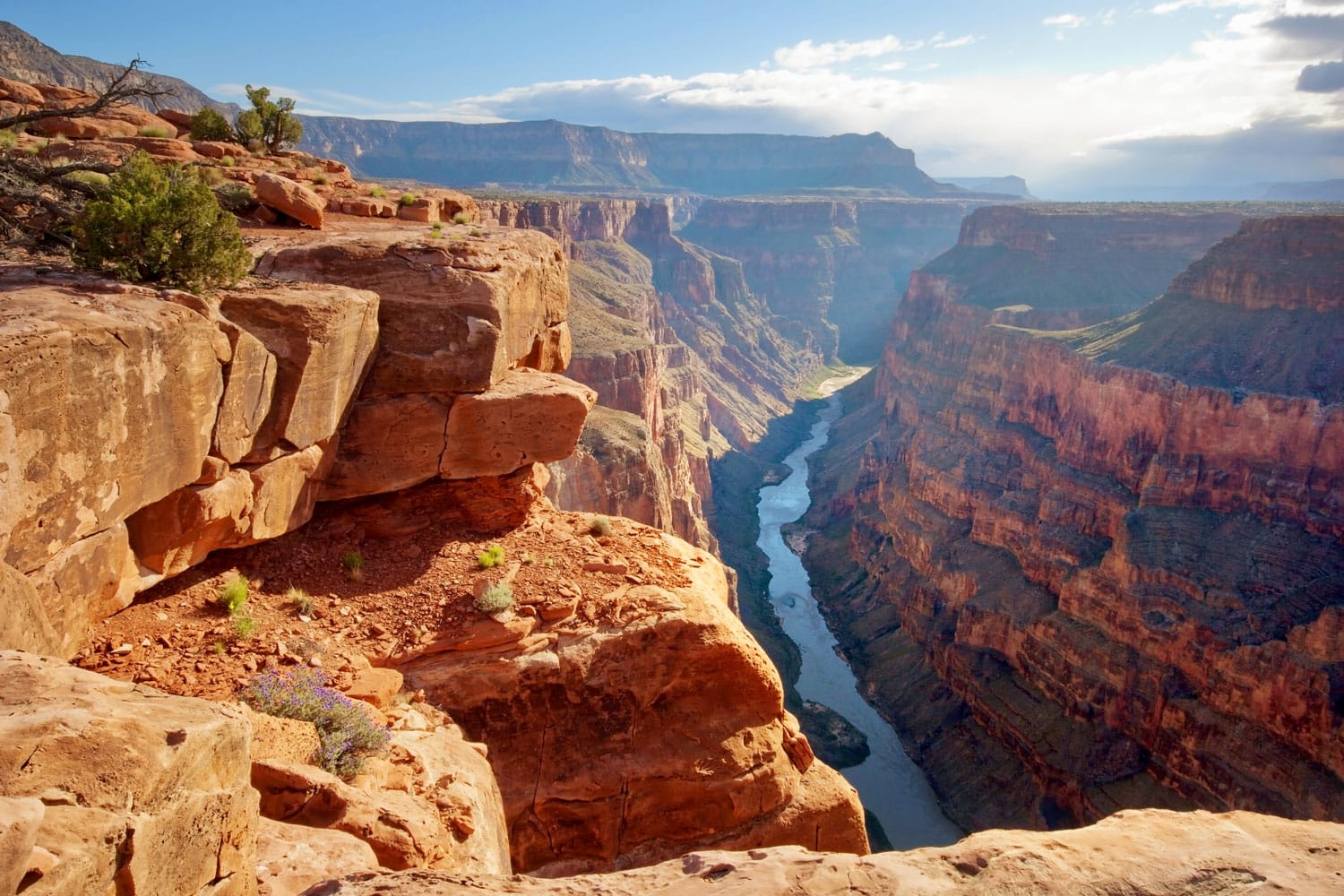
1. Grand Canyon National Park
Thanks to its unforgettable vistas and breathtaking geological features, Grand Canyon National Park is not only the most famous landscape in Arizona – it’s one of the most famous places in the United States. This mile-deep northern Arizona canyon is the sixth most-visited national park in the country.
Don’t get overwhelmed by Grand Canyon National Park’s 1,218,375 acres. Start your planning process by selecting one of the park’s designated rims for that all-important first look down into the canyon. Most visitors choose the South Rim, which is open year-round and home to Mather Point, a beloved lookout spot. Only 10% of park visitors visit the North Rim, which is open from mid-May to mid-October. The other side of the canyon has its own distinctly gorgeous vistas and is a great option for the crowd-averse.
Photography and hiking are two of the park’s most popular activities. Sunrise and sunset, when the changing light casts dramatic shadows across the canyon, are prime shooting times. Day hikers have numerous marked trails to choose from, and overnight backpackers are welcome provided that they have obtained a backcountry permit. Among the many other ways to experience the canyon are mule trips, guided bicycle tours, helicopter tours, and raft trips on the Colorado River.
Book a day tour to the Grand Canyon from Las Vegas, Flagstaff, Sedona, or Phoenix!
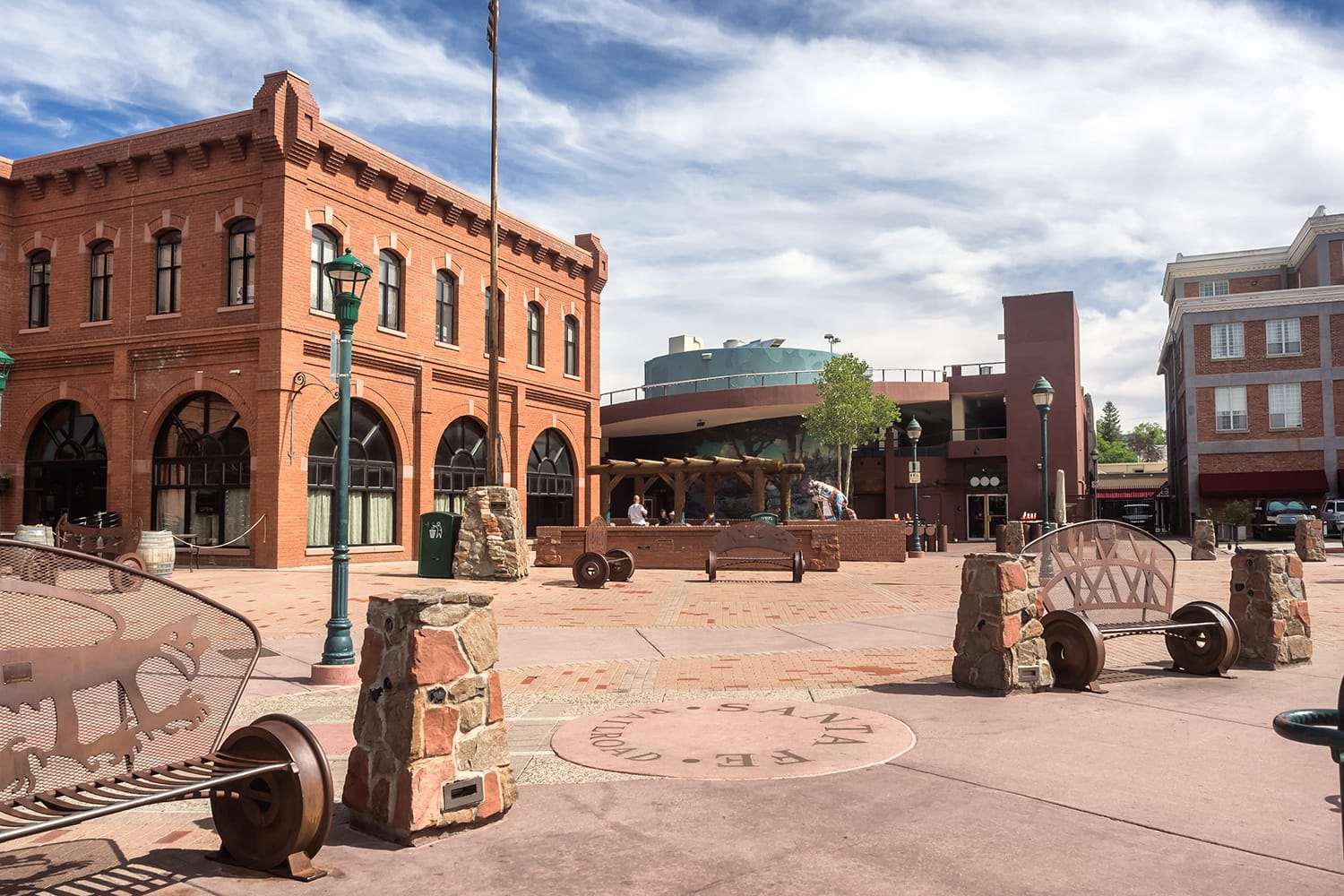
2. Flagstaff
When you think of vacationing in Arizona, do you picture lush forests, volcanoes, and snow-covered peaks? All of these landscapes are present in Flagstaff, a city surrounded by mountainous terrain and the Coconino National Forest in north-central Arizona. Unlike much of the state, Flagstaff is a four-season tourist destination.
Many vacationers see Flagstaff as a gateway to the Grand Canyon since the city is only 75 miles southwest of the iconic site. For an outing closer to Flagstaff, consider Walnut Canyon National Monument, where visitors can observe 700-year-old cliff dwellings and sweeping canyon vistas. Flagstaff has an elevation of about 6,900 feet, so summer temperatures are mild and perfect for hiking and biking. When the weather turns cold, winter sports enthusiasts head to the Arizona Snowbowl resort for skiing, snowboarding, ski biking, and more.
One of the most interesting things about Flagstaff is its relationship with the cosmos. The International Dark-Sky Association designated Flagstaff as the world’s first International Dark-Sky Place in 2001. Visitors can learn about the sky’s heavenly bodies at the Lowell Observatory, the observatory where Pluto was discovered. Lowell telescopes enabled scientists to create lunar maps in the 1960s, and Flagstaff’s volcanic craters and cinder fields mimicked the moon’s surface for astronaut training exercises.
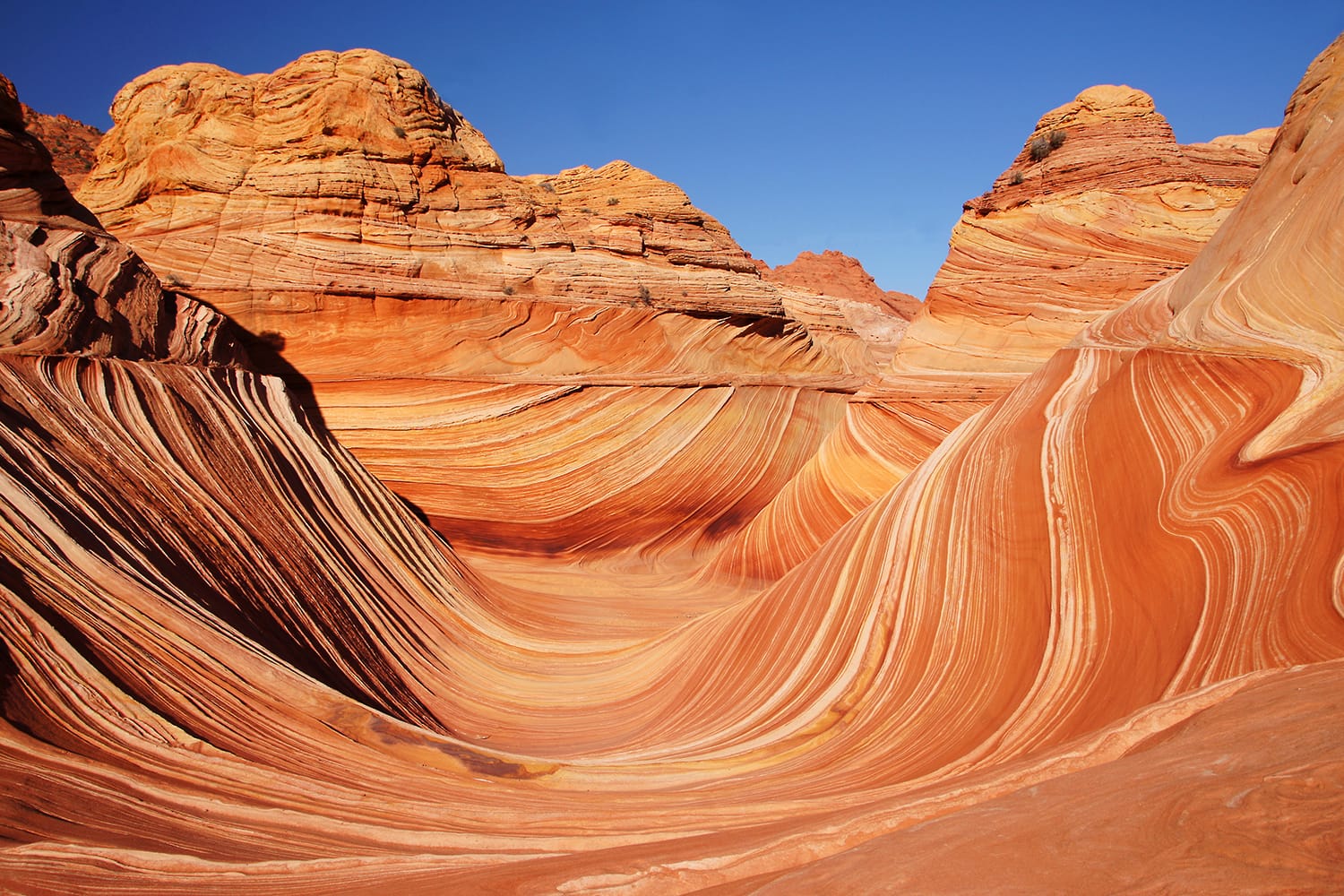
3. Vermilion Cliffs National Monument
Situated just south of the Utah state line, Vermilion Cliffs National Monument is a must-see for photographers. This majestic monument in northern Coconino County spans 280,000 acres and boasts a diverse landscape carved into cliffs, canyons, and buttes. Its most famous feature is undoubtedly The Wave, an undulating sandstone formation whose mesmerizing shades of red and white have graced many a shutterbug’s camera roll.
The monument’s lack of paved roads and trails can be hazardous, so permits are required for certain hikes. The Wave is located in Coyote Buttes North, whose undeveloped wilderness must be navigated with the help of a map, compass, or GPS. The recommended route to the Wave follows a challenging 6.4-mile round-trip hike, but those who take on the trek are rewarded with stunning views of swirling sandstone.
The Paria Canyon–Vermilion Cliffs Wilderness area covers 112,500 acres within the national monument and boasts one of the longest and deepest slot canyons in the world. Intrepid visitors need not worry about trying to take in the whole wilderness in one day: Paria Canyon welcomes overnight backpackers who have secured a permit in advance.
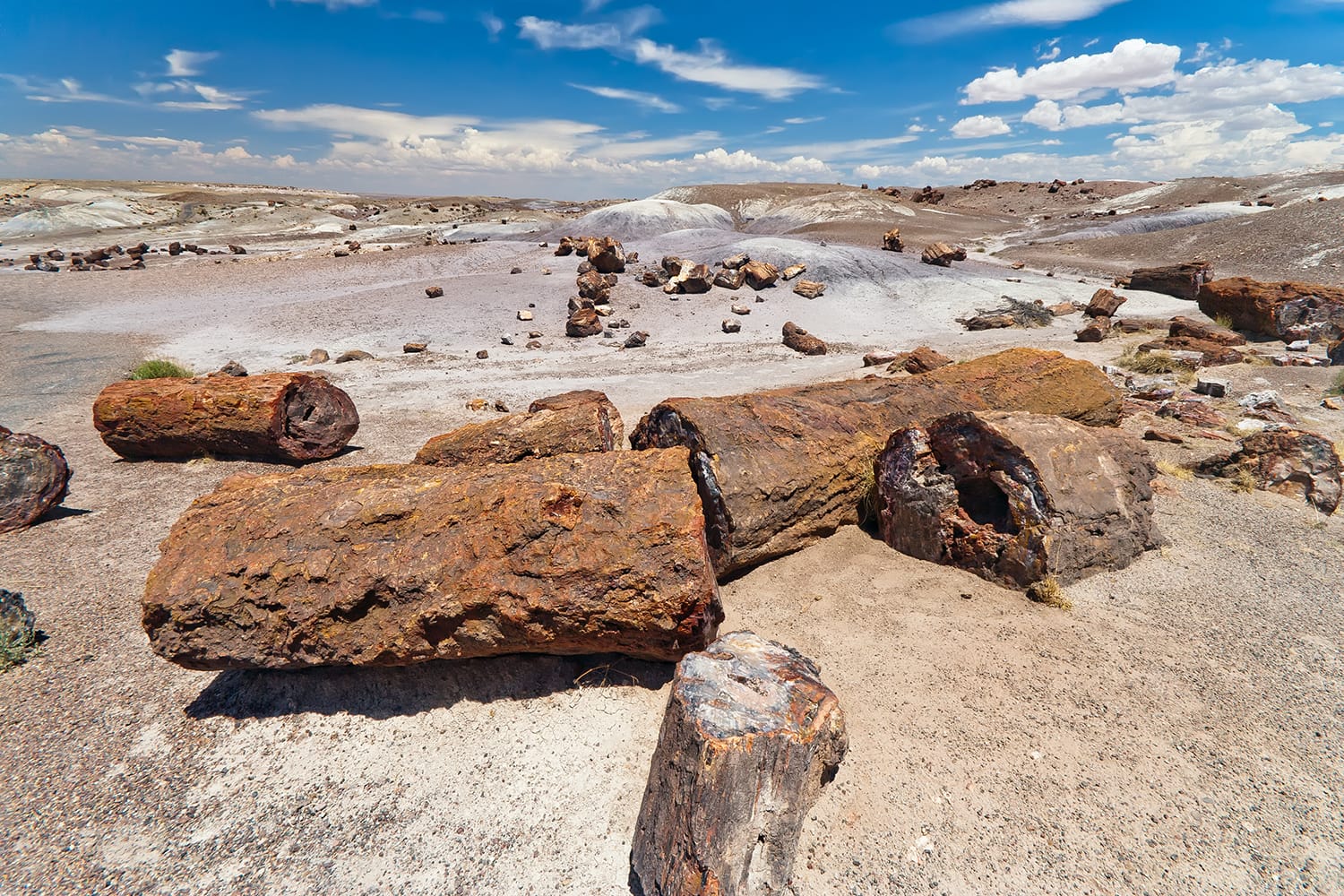
4. Petrified Forest National Park
For road trip travelers visiting places in Arizona along Interstate 40, Petrified Forest National Park is a magnificent spot to get out of the car and stretch one’s legs. The park encompasses more than 200,000 acres and is located within the larger Painted Desert. Though it is surrounded by a rocky desert landscape, Petrified Forest National Park is predominantly semi-arid grassland and short-grass prairieland.
Visitors who decide to explore the park beyond the view from their car windows have a variety of options available to them. Bicycles and e-bikes are permitted on paved park roads and a few unpaved trails, but the most popular activity is hiking. Among the designated trails are the Crystal Forest, named for the crystals embedded in the petrified logs, and the Painted Desert Rim Trail, a winding path that affords breathtaking views of the striated landscape and various plant and animal species.
Many more sights await hikers who want to stray from the beaten path. Wilderness backpacking is available with a free permit, and overnight visitors are treated to star-filled night skies and spectacular sunrises. If your pet is your favorite hiking partner, make sure to sign up for the BARK Ranger program so that your furry friend can accompany you on your wilderness adventures.
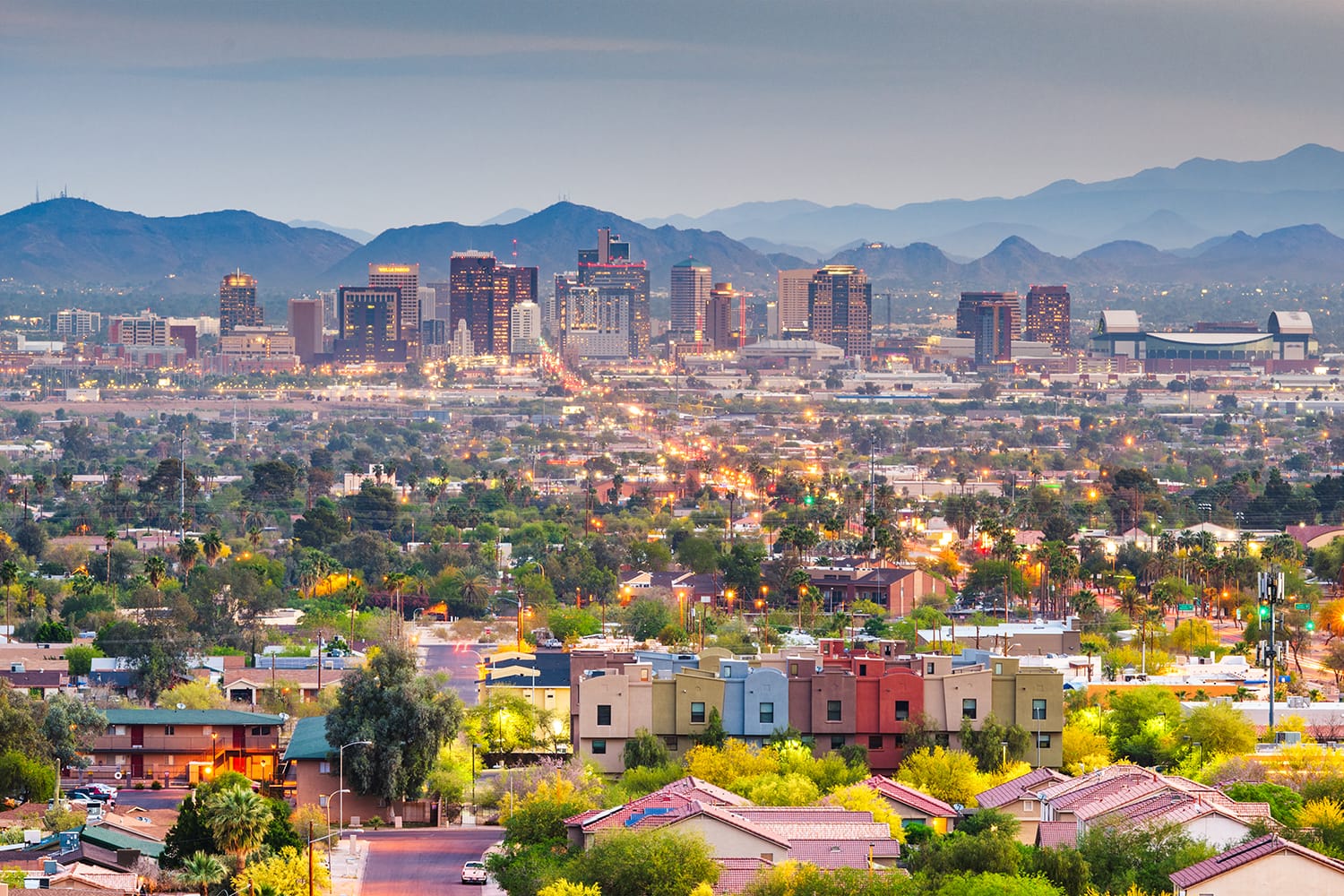
5. Phoenix
There is no shortage of fun things to do in Phoenix, Arizona’s capital and most populous city. The Greater Phoenix Area is known as the Valley of the Sun, and it’s no wonder why: This region in south-central Arizona experiences more than 300 days of sunshine a year. Brave visitors who are willing to see Phoenix in the summertime heat can take advantage of seasonal discounts at certain hotels, resorts, and businesses. But, luckily for the heat-averse, Phoenix is an engaging destination year-round.
Some of the best places to visit in Phoenix are museums, and two fan favorites are the Musical Instrument Museum, whose collection boasts some 8,000 instruments from more than 200 countries around the world, and the Heard Museum, an institution dedicated to the advancement of Native American art. Other popular museums include the Arizona Science Center, the Children’s Museum of Phoenix, and the Penske Racing Museum.
Phoenix may be a metropolis, but it caters admirably to outdoorsy folks as well as city slickers. Tourists and locals regularly flock to Camelback Mountain, a mountain roughly 12 miles northeast of downtown and known for its sprawling views of the city. Another gem close to downtown is Papago Park, which is home to a golf course, zoo, and desert botanical garden as well as multiple hiking and biking trails.
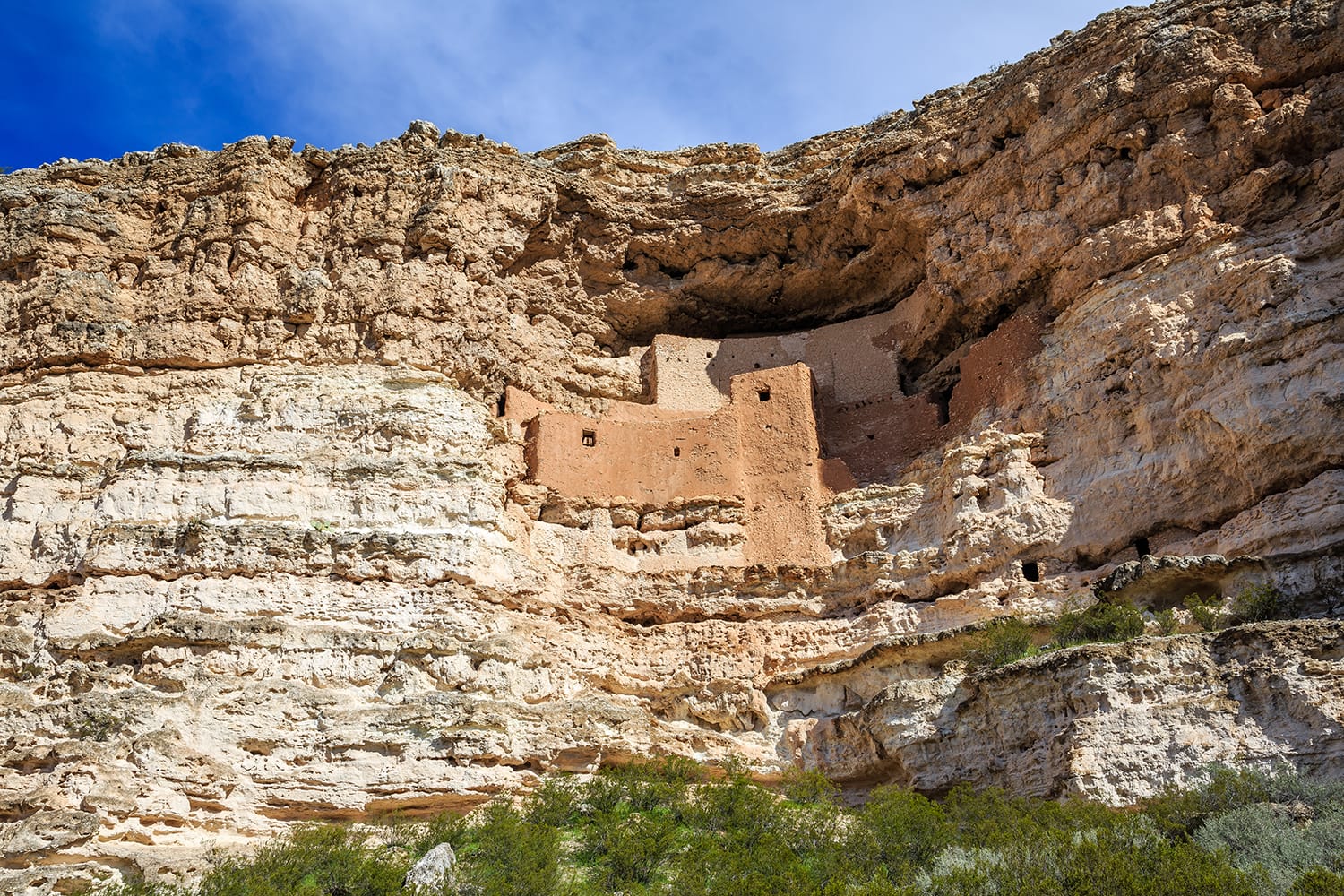
6. Montezuma Castle National Monument
In 1906, President Theodore Roosevelt signed into law the Antiquities Act, which gives the President of the United States the power to declare national monuments. That same year, Montezuma Castle in central Arizona was officially named the country’s third national monument. Nestled approximately 90 feet high in the face of a sheer limestone cliff, the castle is one of the best-preserved dwellings of its kind in the US.
The Sinagua people began building the cliff dwelling in the 12th century. They lived in the castle for around 300 years, using the nearby Verde River for irrigation. After the Sinagua migrated elsewhere, the site remained relatively untouched thanks to its location, which required a series of ladders for people to reach it.
The castle houses 20 rooms that used to be open to visitors for up-close viewing, but public access was suspended in 1951 in order to prevent further damage to the monument. Even with regulations in place, Montezuma Castle welcomes around 350,000 visitors a year. Ranger-led programs and tours are available periodically, and an on-site museum exhibits ethnological objects and archaeological artifacts. The monument also features a short hiking trail and a limestone sinkhole known as Montezuma Well, which harbors a unique aquatic habitat.
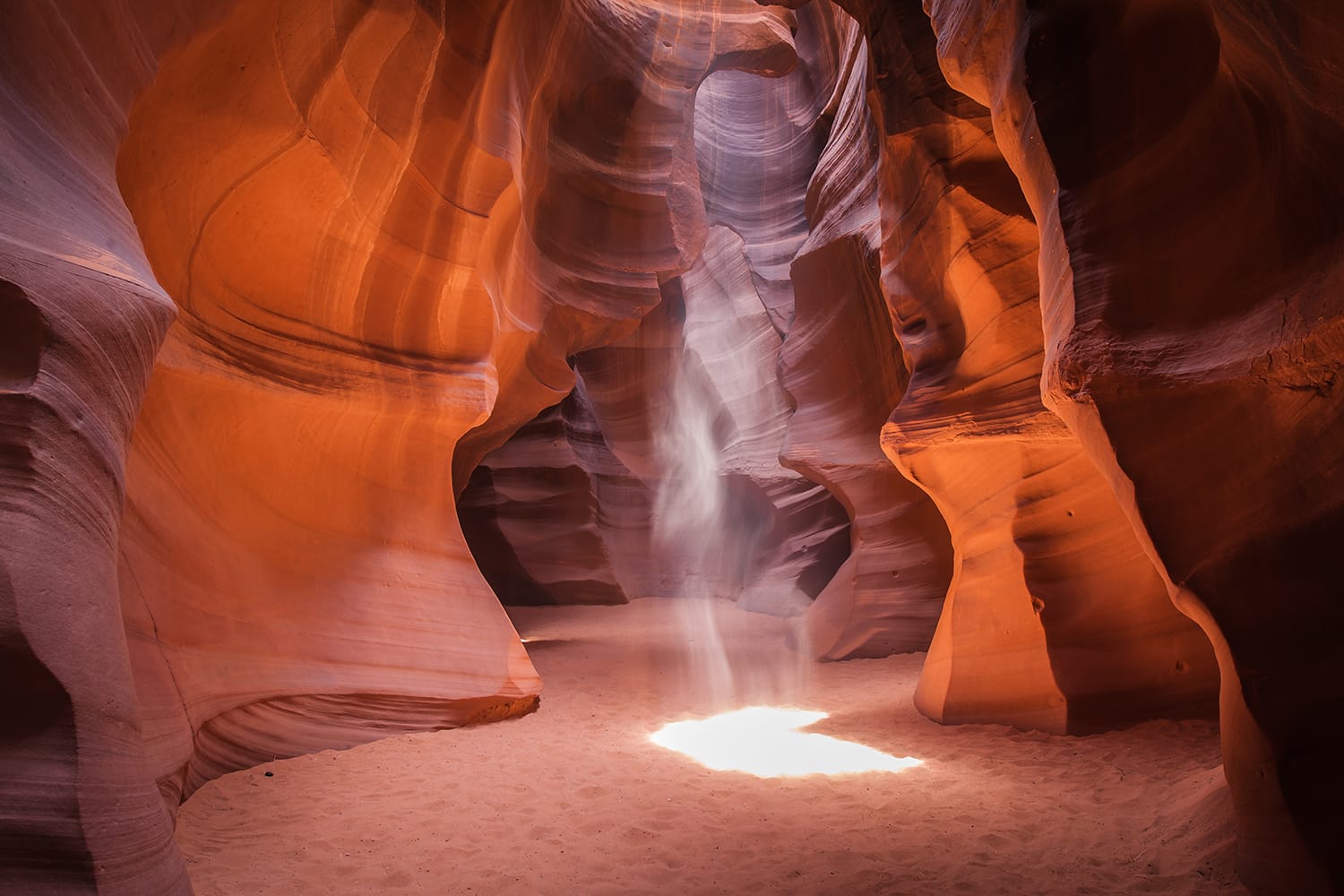
7. Antelope Canyon
Located just east of the Vermilion Cliffs National Monument is Antelope Canyon, a photographer’s dream and one of the most beautiful places in Arizona. This geological formation is the result of years of rainwater eroding the Navajo sandstone until the flow formed a winding trench with sheer walls up to 120 feet high.
Antelope Canyon is divided into two slot canyon sections situated on Navajo land. Upper Antelope Canyon (also called Tse’ bighanilini, meaning “the place where water runs through rocks”) is the most popular section with tourists, since no climbing is required to navigate it. Lower Antelope Canyon’s Navajo name is Hazdistazí, meaning “spiral rock arches.” This lower section is narrower than its counterpart, and traversing it involves tackling several flights of stairs.
The only way to visit Antelope Canyon is with a guided tour. In order to maximize your experience (especially if you plan on snapping some photos), book a tour between late March and early October, at a time when the sun is high in the sky. Sunny weather provides the best conditions for the site’s famous light beams, which occur when the sun’s rays illuminate isolated areas of the canyon, creating a celestial spotlight.
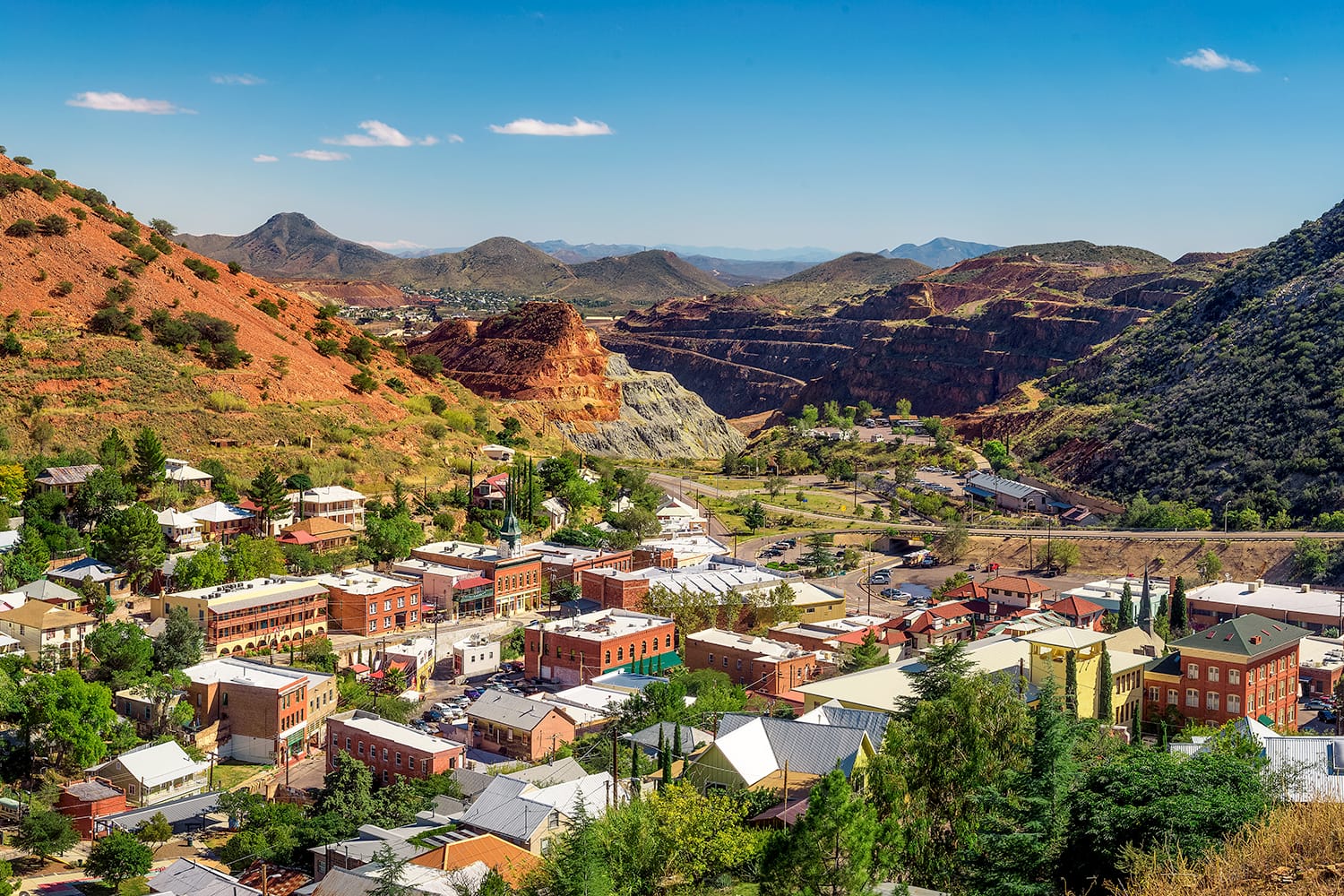
8. Bisbee
Less than 10 miles north of the Mexican border is a small town that once was a bustling center of culture. After a tracker discovered mineral deposits here in the 1870s, Bisbee developed into a booming mining community that eventually earned the moniker Queen of the Copper Camps. By the mid-1970s, mining operations had ceased and Bisbee’s population had shrunk significantly. Today, Bisbee is an eclectic, quirky town that embraces history, art, and any curious tourists who pass by.
The most popular tourist attractions in Bisbee take visitors back to the town’s mining days. The Bisbee Mining & Historical Museum is a Smithsonian Affiliate and offers an interactive, family-friendly dive into the area’s copper-mining history. An even more immersive experience is possible with an underground tour of the Queen Mine led by retired miners. Some spooky ways to explore Bisbee’s past include ghost tours and theatrical séance performances.
Bisbee is also known for its thriving art scene. More than a dozen galleries showcase paintings, photography, pottery, jewelry, sculptures, and more. A monthly art walk called Bisbee After 5 takes place every second Saturday, during which galleries, restaurants, and shops stay open late and attendees enjoy live entertainment, raffles, and other special events.
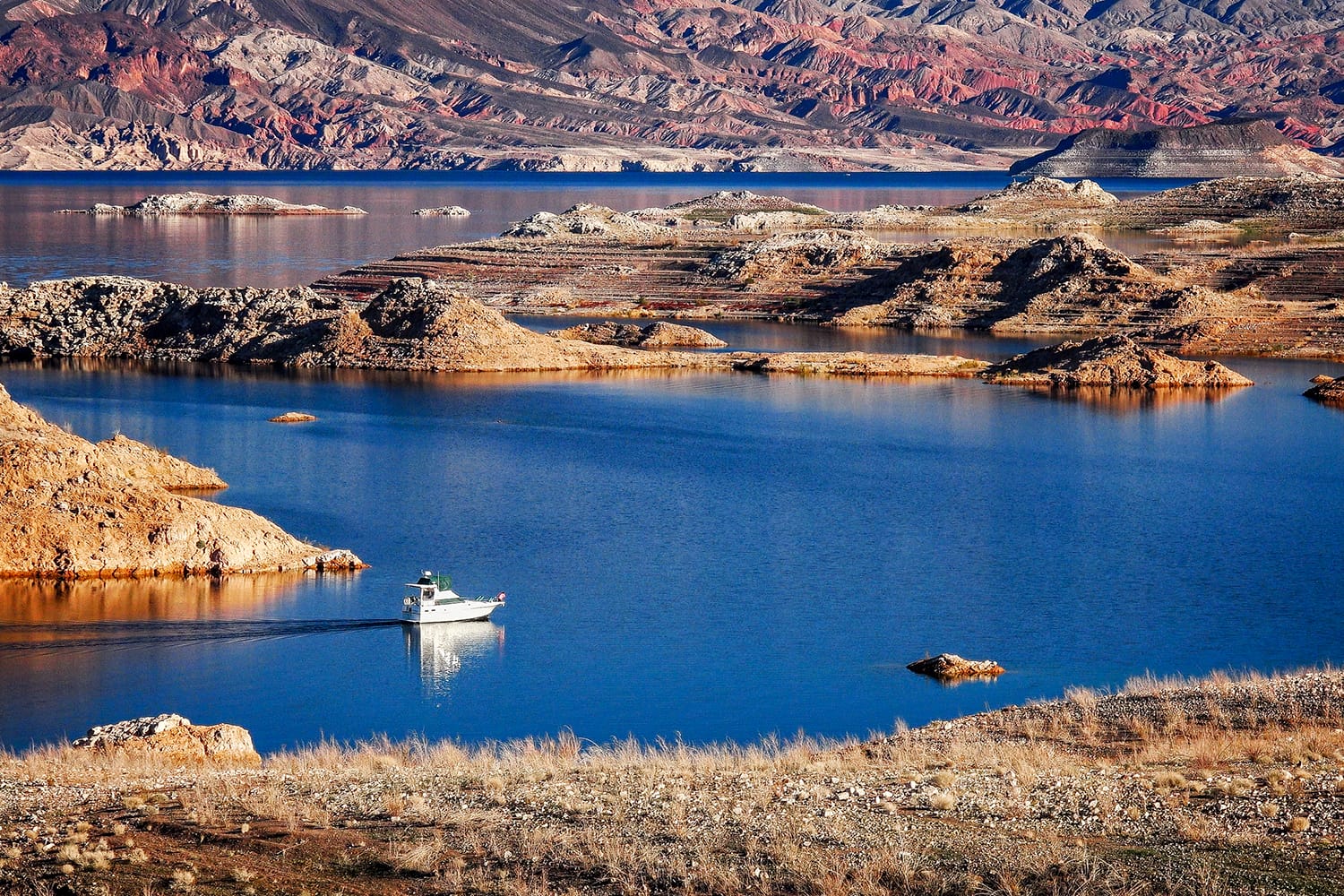
9. Lake Mead National Recreation Area
Straddling the border between Nevada and Arizona is the United States’ first national recreation area and one of the best vacation spots in Arizona for water sports enthusiasts. The recreation area comprises two reservoirs, Lake Mead and Lake Mohave, which were created when the Colorado River was impounded by the Hoover Dam and Davis Dam respectively. In terms of water capacity, Lake Mead is the largest reservoir in the United States, so it’s no wonder that aquatic activities abound here.
Unsurprisingly, boating is one of the most popular activities. The recreation area has more than 290 square miles of waterways, and marinas offer kayaks, canoes, and paddleboards for rent in case you didn’t bring your own paddle craft. Other aquatic pastimes in this desert oasis include fishing, swimming, tubing, waterskiing, and freshwater scuba diving.
There’s plenty of fun to be had on land, too. Trails and backcountry roads provide miles of terrain for hikers, bikers, and horseback riders, but make sure to take the weather into account when planning your trip. Avoid scorching summer temperatures by visiting during the recommended hiking season: November to March. And don’t forget your camera to document the surrounding wildlife, which could include bighorn sheep, tortoises, or even migrating American bald eagles.
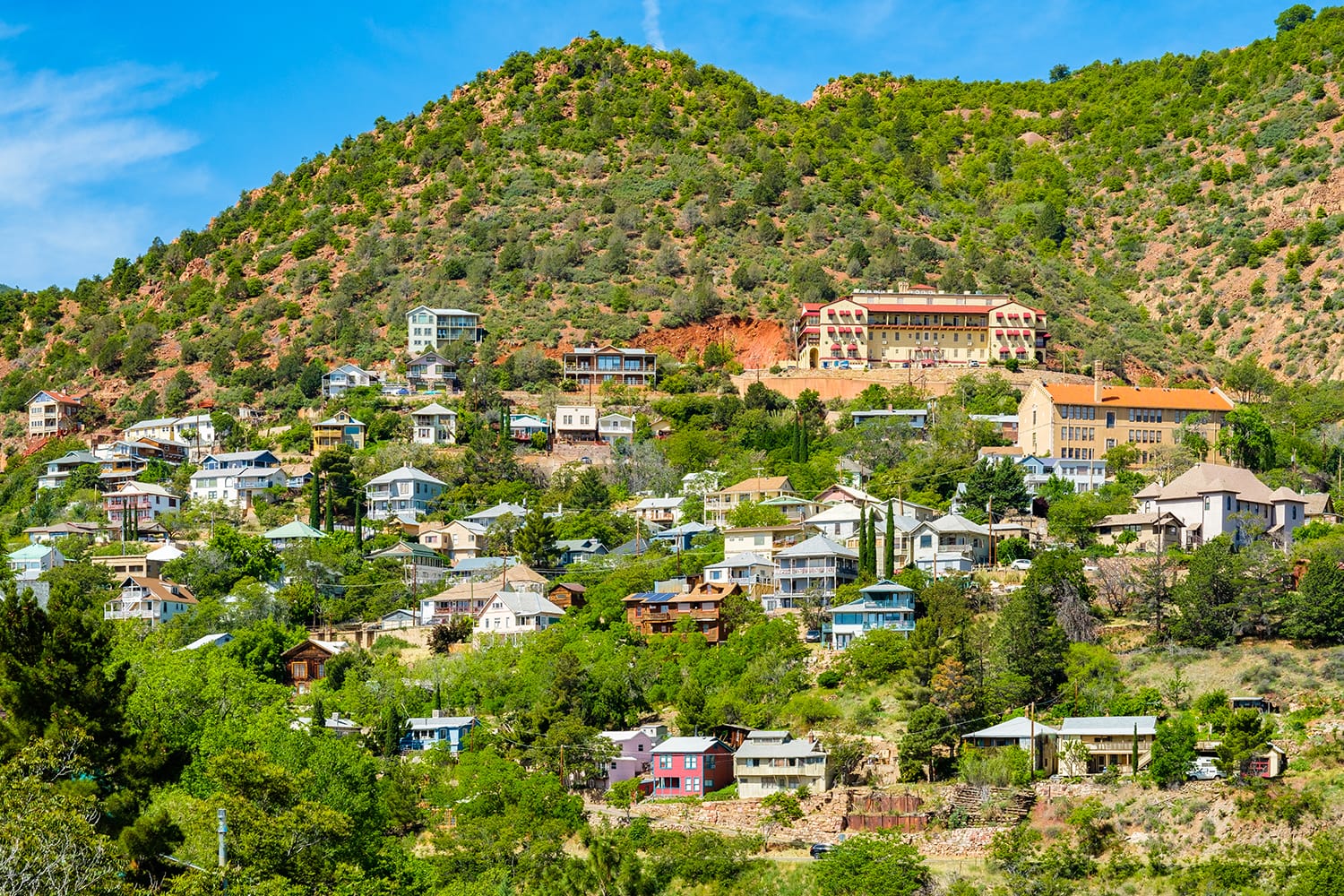
10. Jerome
When it comes to day-trip options in Arizona, Jerome is a good choice for travelers who want a fun sojourn without the hassle of crowds. The tiny community is about two hours north of Phoenix, one hour northeast of Prescott, and an hour and a half southwest of Flagstaff by car. The entire town of Jerome was declared a National Historic Landmark in 1967, so it’s an ideal destination for history buffs.
Founded in 1876, Jerome grew from a small mining settlement into one of the largest towns in Arizona by the early 20th century. The prominence of saloons, brothels, and gambling in Jerome led to a rather unsavory nickname: the Wickedest Town in the West. Most of its residents relocated when the demand for copper decreased dramatically after World War II, and today Jerome’s economy relies on tourism.
The Gold King Mine & Ghost Town is a must-see in Jerome. Historic buildings, mining equipment, and vehicles are on view; there’s also a petting zoo and a gold-panning activity for kids. For more insight into the town’s past, head to Jerome State Historic Park, home to the 1916 Douglas Mansion. In addition to its mining history, Jerome is also known for its many art galleries and wine cellars.
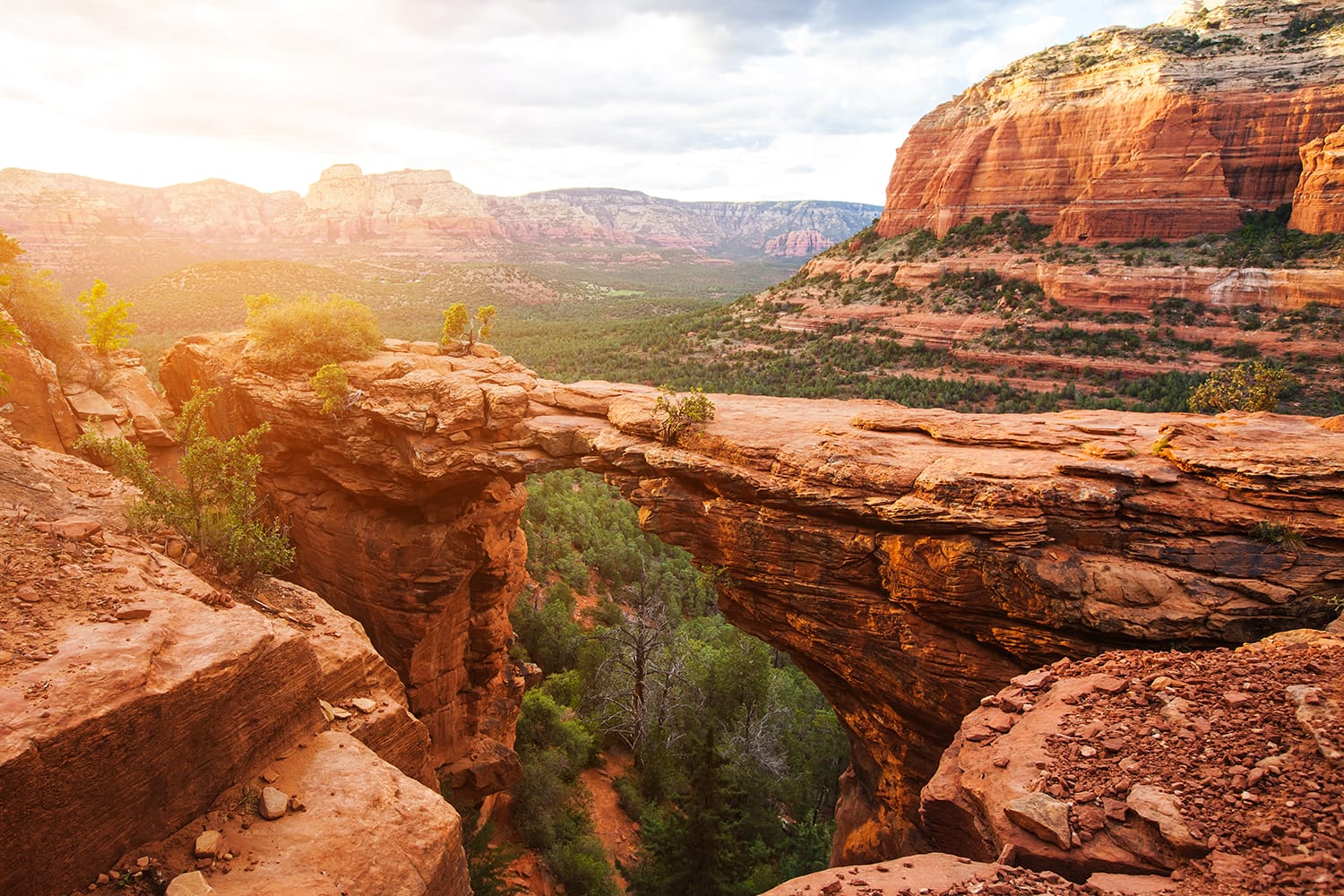
11. Sedona
Sightseeing in Sedona means venturing outdoors. This north-central Arizona city is best known for its abundance of red sandstone formations, whose colors take on a striking glow at sunrise and sunset. The 1980s saw the birth of Sedona’s reputation as a New Age capital when a psychic named Page Bryant had a vision identifying energy vortexes in the area. People have been flocking here to seek spiritual enlightenment and healing ever since.
Whether or not you believe in concentrated cosmic forces, the so-called vortexes have become major tourist attractions in Arizona. Meditation, yoga, and other mindfulness activities are popular at these unmarked spots among the rocks and mesas. Although Sedona is sometimes called “a cathedral without walls,” there is a physical place of worship here that draws travelers, too. Completed in 1956, the Chapel of the Holy Cross was built with the architectural style of the Empire State Building in mind. The chapel’s position atop the red rocks adds to its majesty.
Physical wellness as well as spiritual wellness is valued and encouraged in Sedona. Hiking, biking, and horseback riding trails are plentiful, and intrepid folks can try their hand at ATV riding or climbing the landscape’s renowned red rocks. A dozen area spas offer treatments that range from body massage and facial treatments to hypnosis and reiki healing.
Book a Jeep adventure tour through Sedona here!
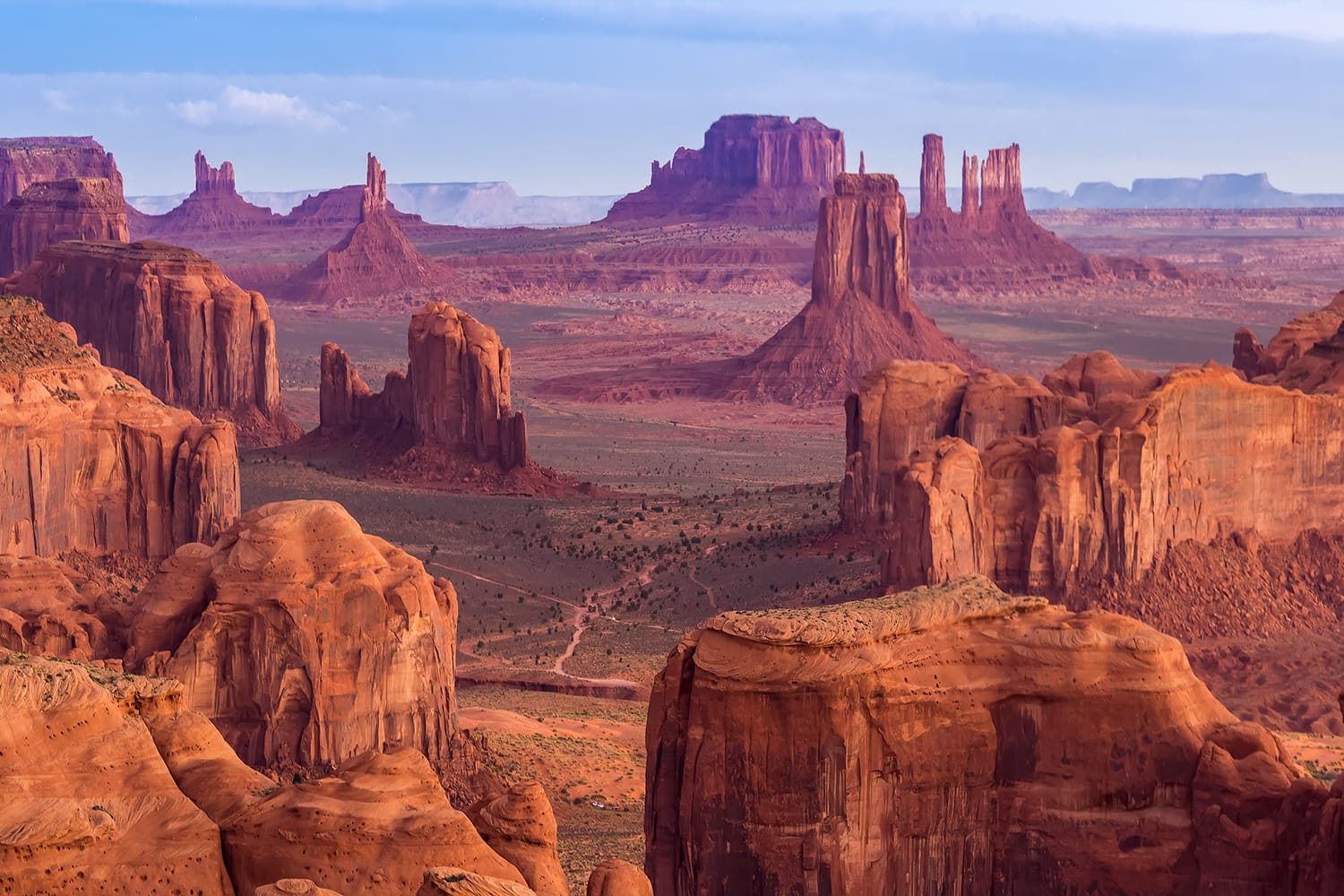
12. Monument Valley Navajo Tribal Park
Head to the Navajo Nation reservation to witness some of the most recognizable landmarks in Arizona, and possibly all of the United States. Straddling the state line between Arizona and Utah, Monument Valley Navajo Tribal Park is part of the Colorado Plateau and known for its large sandstone buttes, some of which rise 1,000 feet above the desert floor.
This magnificent landscape gained international recognition and fame after director John Ford filmed several influential Westerns here, including Stagecoach and The Searchers. Monument Valley continues to be a popular filming location for movies, television shows, and more. Visitors can opt for a self-guided tour of the valley, but a more educational tour is possible with a guide. A wide variety of Navajo-guided tours is available, from Jeep journeys and horseback excursions to photography-focused tours.
Get the full Monument Valley experience by staying the night. Wilderness campgrounds and RV sites are available, and the Arizona side of the valley is home to The View Hotel, where most rooms have a private balcony perfect for stargazing. The View’s on-site restaurant features authentic Navajo dishes and sprawling views of the desert.
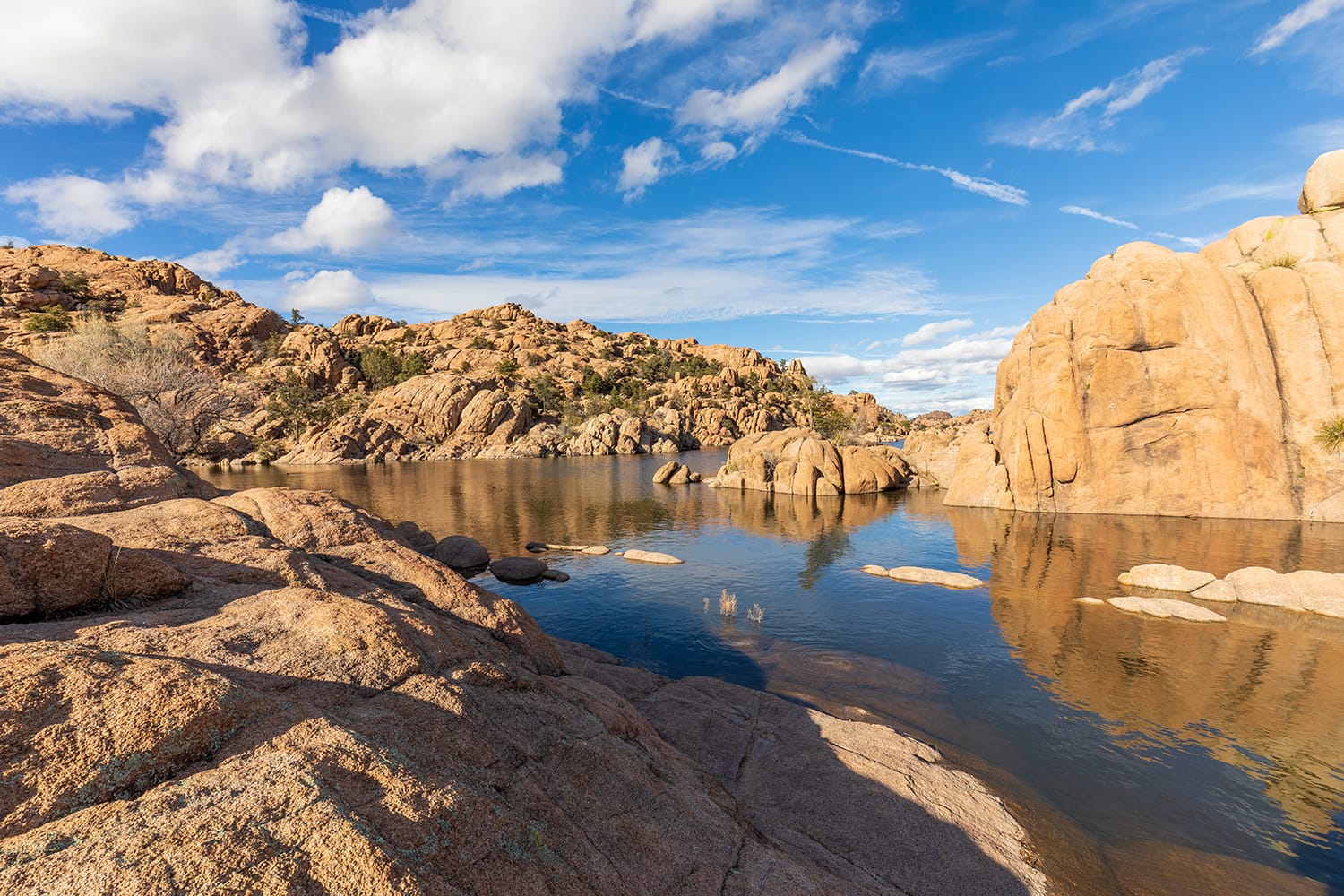
13. Prescott
At an elevation of more than 5,000 feet above sea level, Prescott is a refreshing four-season destination in central Arizona. The top attractions in Prescott exemplify the wide variety of activities that are available here thanks to a diverse landscape that blends city life and nature. Whether you’re looking for outdoor adventure or a dose of history and culture, there’s something for everyone in Prescott.
About five miles northeast of downtown is Lake Watson, one of Prescott’s most popular sites. The contrast between the lake’s deep blue waters and the surrounding boulders have rendered the spot a favorite for photographers. Activities on and around the lake include fishing, boating, hiking, and overnight camping. To the west of the city, Prescott National Forest also offers hiking, fishing, and camping, as well as bike trails and rock-climbing opportunities.
Some of Prescott’s best nightlife can be found on Whiskey Row, a section of downtown so named because it used to comprise more than 40 saloons in the early 1900s. Today, Whiskey Row is home to restaurants and art galleries in addition to saloons. For more history, check out Prescott’s varied museums, which include the Museum of Indigenous People and the open-air Sharlot Hall Museum.
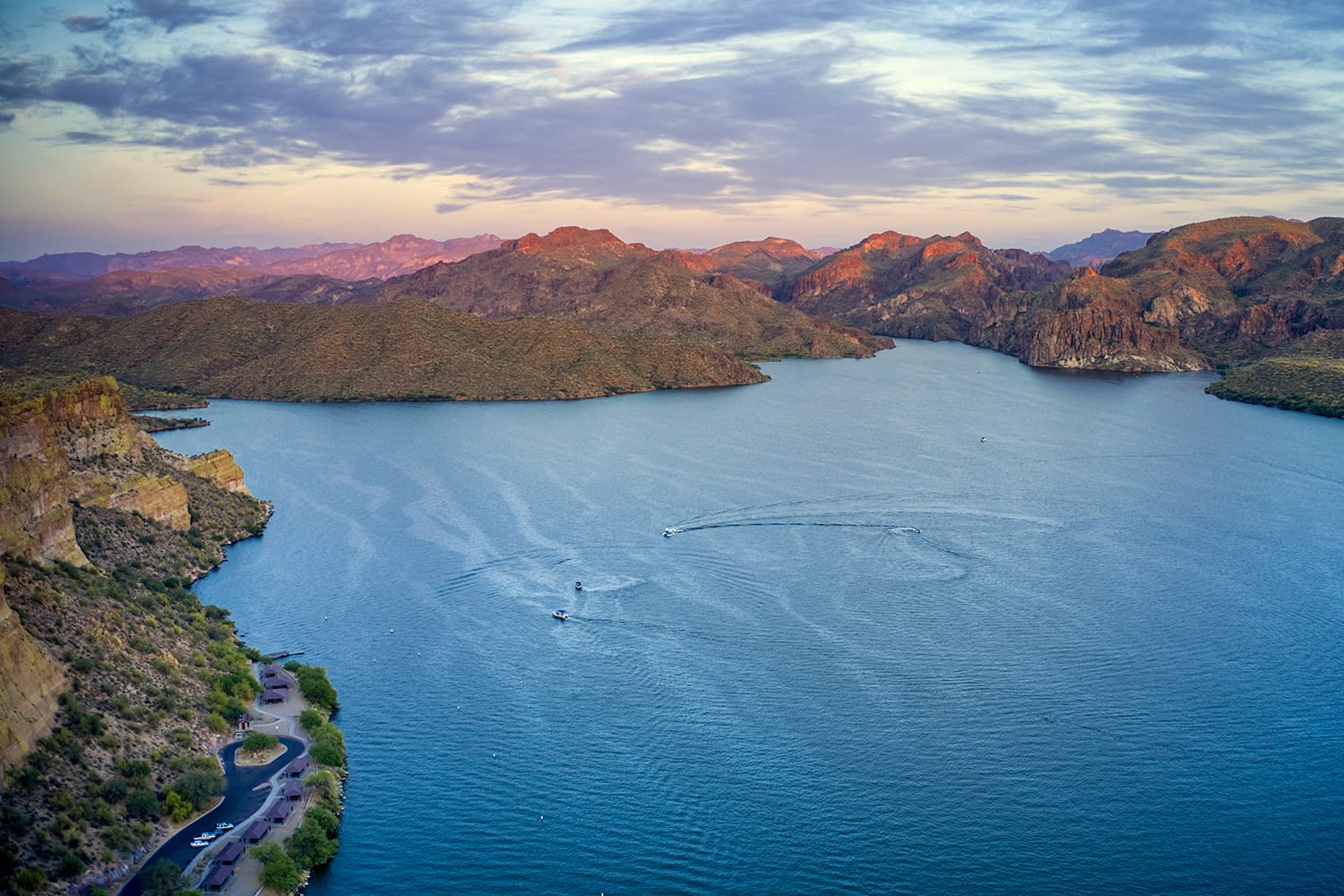
14. Saguaro Lake
Located about 40 miles northeast of Phoenix, Saguaro Lake was created in 1930 when the Stewart Mountain Dam impounded the Salt River. The reservoir sits at an elevation of 1,500 feet in the Sonoran Desert. It’s a picturesque oasis and a treat for shutterbugs, thanks to the rugged canyon walls that rise between the sparkling blue water and the wide blue skies.
Visiting Saguaro Lake means enjoying more than 22 miles of shoreline dotted with iconic saguaro cactuses. The Lake’s namesake plant, which has become an icon of the American West, is the largest species of cactus in the world and native to the Sonoran Desert. Popular aquatic activities on the lake include motorized and non-motorized boating, kayaking, waterskiing, and fishing. Keen anglers can take advantage of champion bass and carp fishing, as well as crappie, sunfish, catfish, tilapia, and walleye fishing.
Saguaro Lake is part of Tonto National Forest, the largest national forest in Arizona. The lake experiences high traffic in the summer months and reaches maximum boating capacity early in the day on most weekends in April through October, so make sure to plan ahead if boating is your activity of choice.
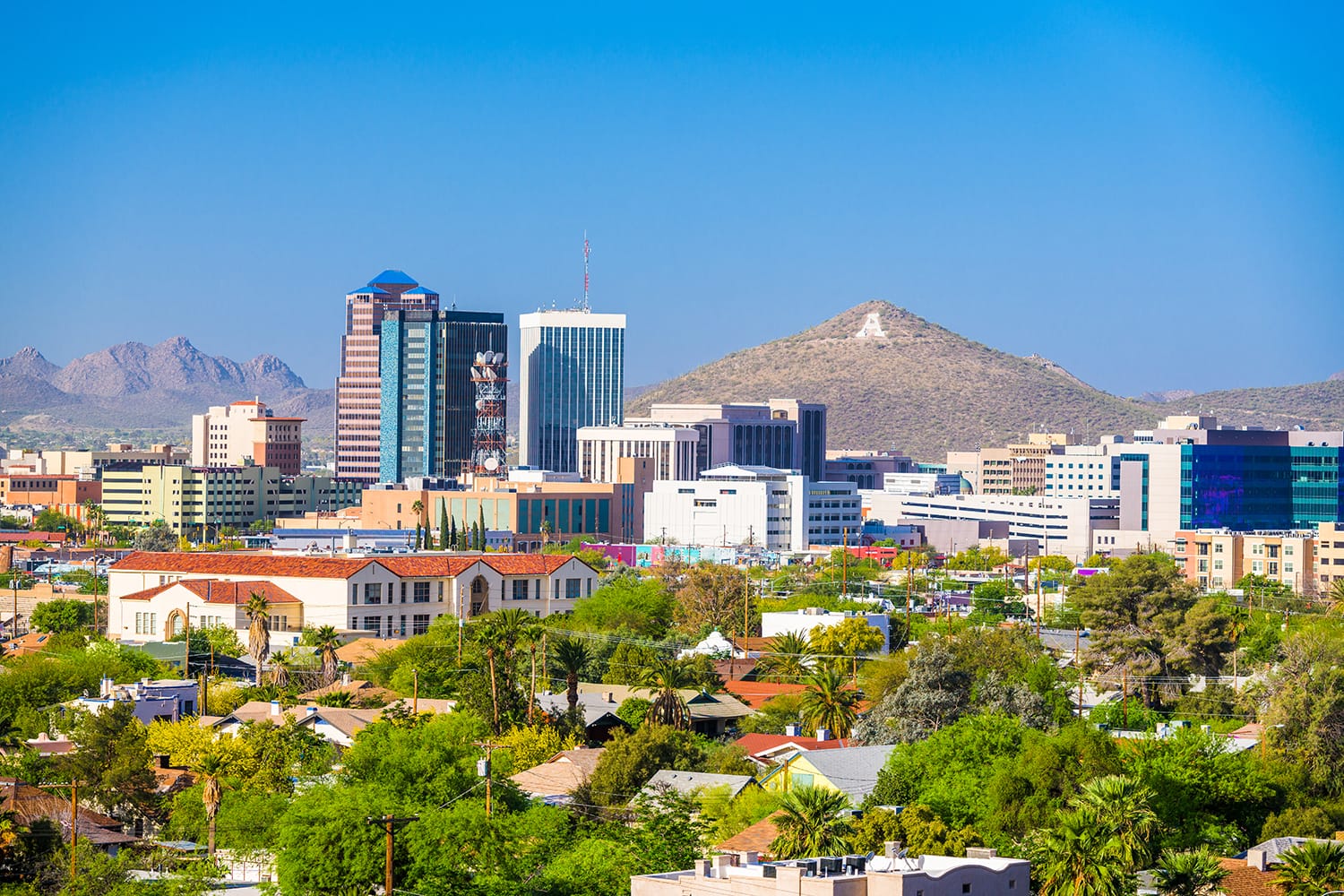
15. Tucson
Whether your interests lie in outdoor pursuits, cowboy culture, the arts, or remarkable local gastronomy, you’ll find plenty of things to see in Tucson. Founded as a military fort in 1775, Tucson was Arizona’s most populous city until the 1920s. Tucson’s identity has been shaped in large part by the University of Arizona, which was established here in 1885 as the first university in Arizona territory.
Tucson may be the second-largest city in Arizona, but many of its attractions invite visitors to return to nature. Northwest of town is Saguaro National Park, whose rugged landscape is peppered with the park’s namesake cactus. There are more than 165 miles of hiking trails here, as well as wilderness hiking and backcountry camping opportunities. The popular Arizona–Sonora Desert Museum complex is just south of the national park and includes a zoo, botanical garden, natural history museum, aquarium, and art gallery.
In 2015, Tucson became the first city in the United States to receive UNESCO’s City of Gastronomy designation, and foodies can choose from an abundance of delectable Mexican and Native American fare at chef-focused restaurants. Lovers of the arts are also spoiled for choice in Tucson, which boasts a plethora of theaters, museums, galleries, and studios.
Don’t let the state’s notoriously hot weather deter you; there are too many cool places in Arizona for it to be left off of your travel bucket list. And, depending on your destination, your Arizona vacation can be as active or as relaxed as you want. A land of sandstone icons, star-filled skies, and historic communities awaits.


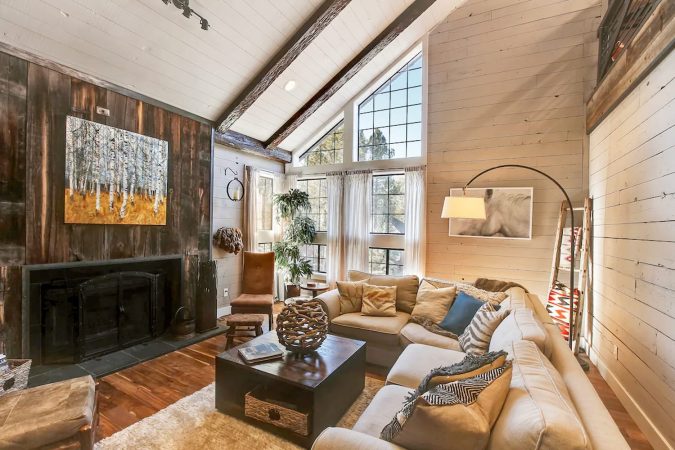
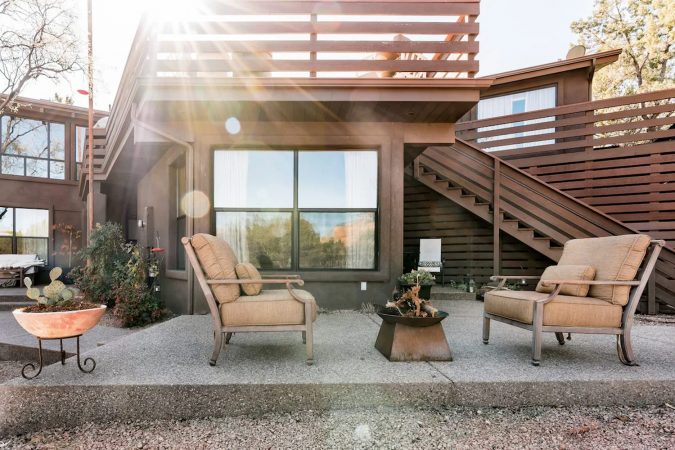
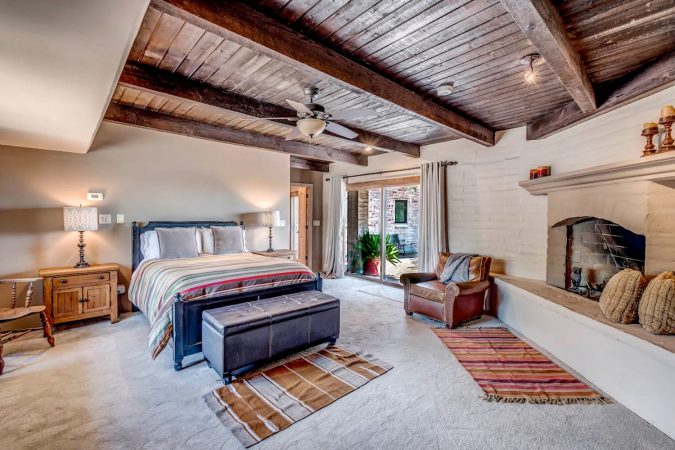
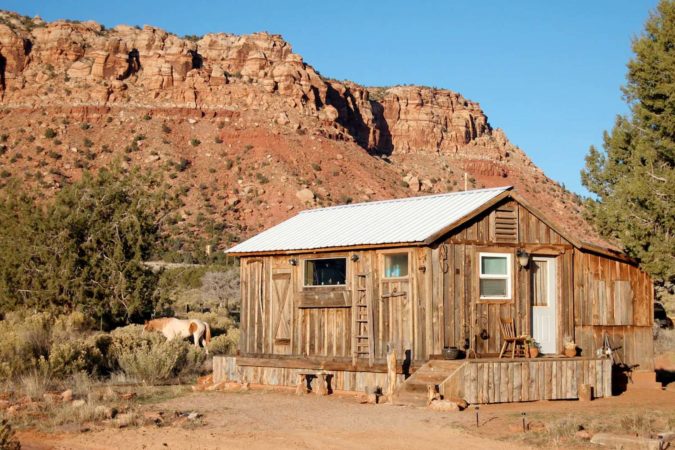
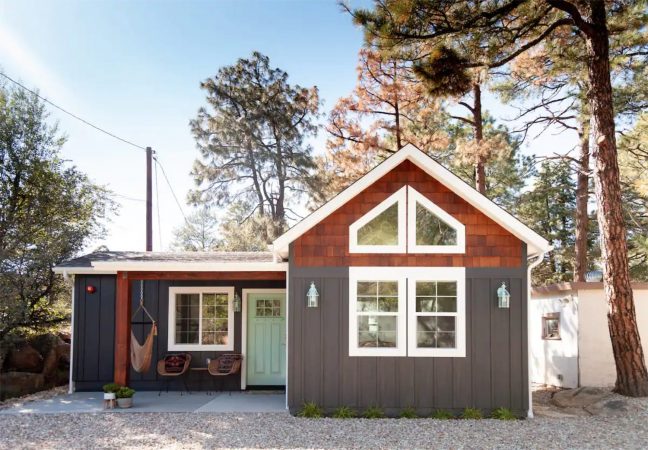
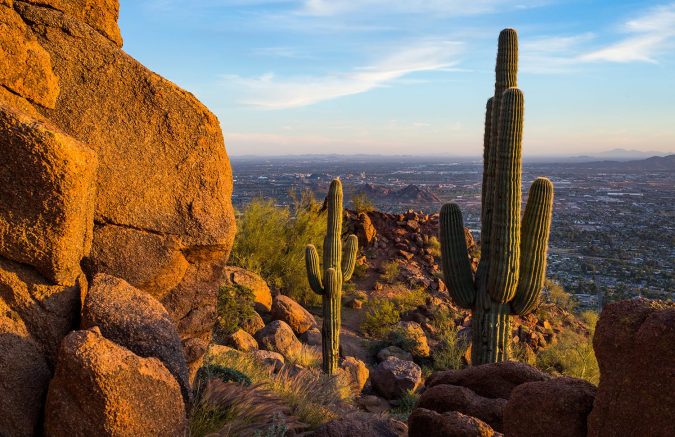
Comments